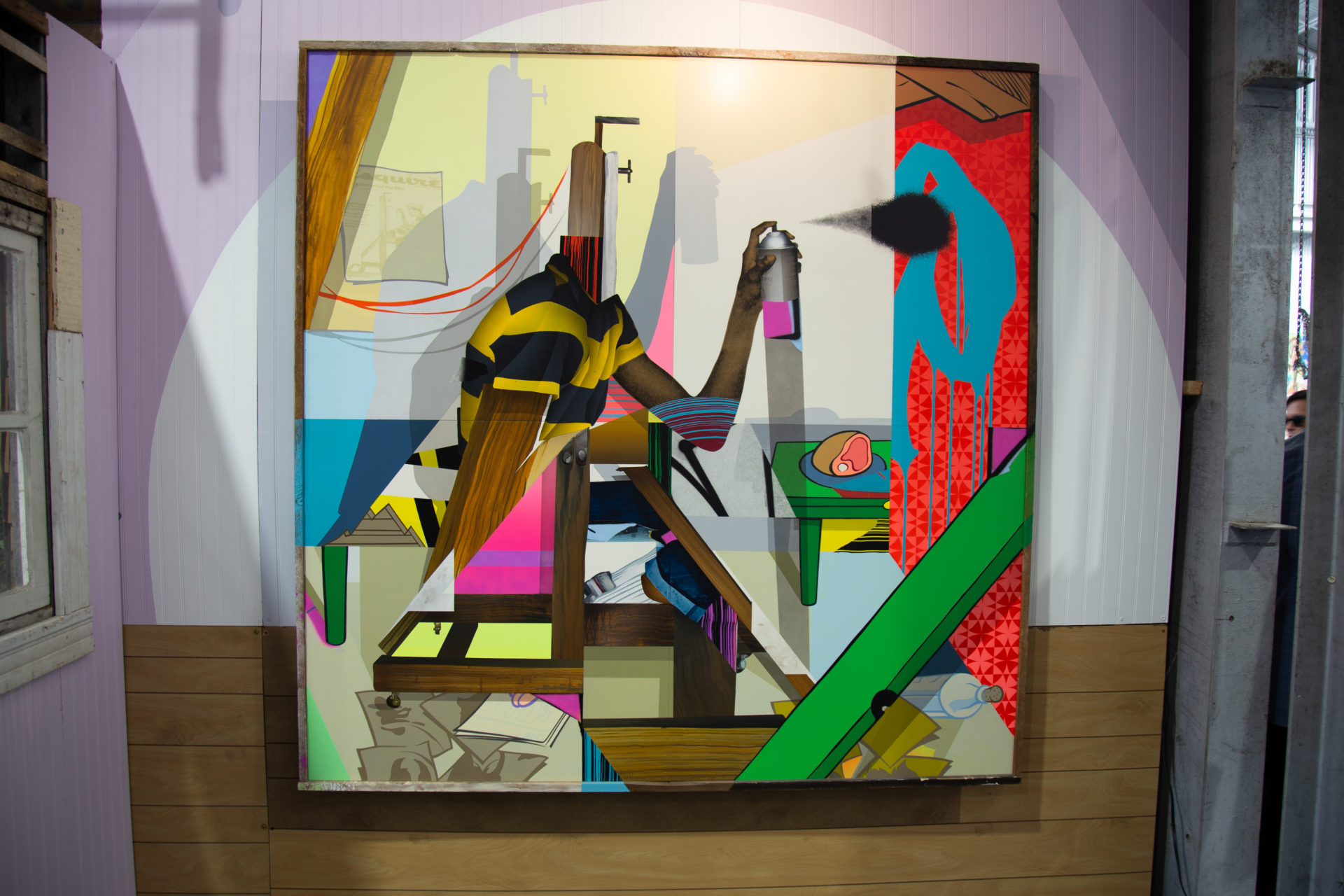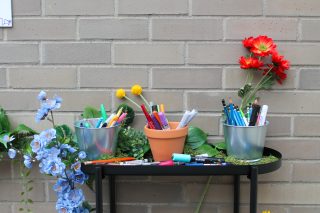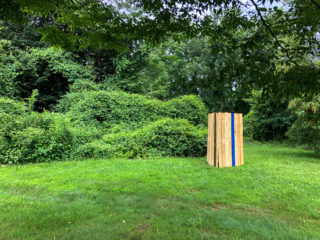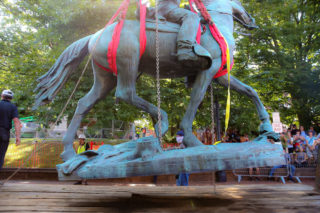When the Museum of Contemporary Art Los Angeles hosted Art in the Streets in 2011, the exhibition was described as a “first draft of an untold history;” an academic approach to art movements that for decades were understood more as facets of sociology and urban studies than as contemporary art. But when a truly public component of the exhibition—a mural on the museum’s building—was buffed away before the show even opened because the artist’s work was antiwar, that was the first hint that maybe street art and museums don’t mix (at least not with how museums operate today).
There wasn’t enough funding to bring Art in the Streets to the Brooklyn Museum as originally planned, even though by some estimates it was the most-attended show in MOCA’s history. And since then the graffiti and street art movements have continued to flourish on their own terms, taking advantage of the commercial market and writing their own histories with exhibitions like Beyond the Streets.
Curated by Roger Gastman—who helped curate Art in the Streets almost a decade ago alongside Aaron Rose and then-museum director Jeffrey Deitch—Beyond the Streets is a monumental presentation of work by internationally renowned graffiti and street artists from around the globe. Indistinguishable from a museum exhibition, the show includes both indoor and outdoor installations, artists creating in dialogue with one another, and a handful of those significant works that have already solidified their place in street art history.

A collector, curator, graffiti historian, and urban anthropologist, Gastman shares how Beyond the Streets might function as a template for exhibiting and educating outside of traditional art world institutions:
Lindsey Davis: The exhibition’s About page describes you as being a “cultural connector between street artists and the art world” but the exhibition is staged in an independent studio space. Were there ever any discussions about staging the exhibition within a more traditional curatorial context, or was the decision to exhibit independently deliberate?
Roger Gastman: I’ve worked with many museums throughout my career, including co-curating Art in The Streets at MOCA, which is many ways was the genesis and inspiration for this show. Ultimately, for Beyond The Streets, we knew we wanted to create it entirely on our own, without an institutional partner, and we think the response—from the art world, from artists in the show, and from our attendees—has validated that approach.
Also, while it is technically an “independent studio space,” that doesn’t really do justice to the scale of the exhibition: 40,000 square feet of indoor and outdoor space. We wanted something that felt museum-like in size and presentation, but without the museum rules or connotations.

LD: Where do you see street art and graffiti fitting into the larger trajectory of art history? What do you think’s the biggest difference between your view of those movements and the way museum boards and curators see them?
RG: I think graffiti and street art’s “seat at the table” culturally is now undeniable. It’s by far the most pervasive global art form, and its impact on music, fashion and other cornerstones of culture is widespread and isn’t going away. But the same cannot be said of graffiti and street art within art history more specifically. I see two things:
Firstly, and more broadly, there is a lack of education about the origins of the culture and the incredible artists who have spent their lives in pursuit of their craft. More needs to be done there, and that’s very much been a core facet of my career in the arts. Who are these people, why did they start? What drove this inspiration? I believe institutions can play a bigger role in this way. There are “schools” and periods of influence in this culture that can be studied similar to all the other great art periods.

And two, there are lingering issues with acceptance or validation of these artists as capital A “Artists.” Obviously there are notable artists who began in the street are now collected and represented at the highest levels. But those are exceptions to the rule. The art world’s insider definition of status and acceptance is limiting and exclusionary. And that needs to change.
LD: How long did it take to put this exhibition together?
RG: The timing question has a few answers: my life’s work of relationships and contacts; several years really fleshing out the idea; a few years of multiple people working at least 50% of the time on it; at least a year of a lot of people working full time. We’re a small team and it’s an incredible amount of work. I’m very thankful for the people that chose to embark on this mission with me.

There are lingering issues with acceptance or validation of these artists as capital A “Artists.” The art world’s insider definition of status and acceptance is limiting and exclusionary. And that needs to change.
LD: The exhibition’s partners listed online are primarily large companies… Do you see corporate sponsorship of the arts—or street art in particular—as more viable or productive than applying for grants or foundation funding?
RG: Ultimately, any brand we partner with, I have to justify to the artists, so the brand has to make sense, as does what we intend to do with them. Adidas was an amazing partner, and very additive to the experience for attendees. They understand the culture, and have really been there since day one, so that wasn’t a challenge. They were great to work with. AT&T wanted to offer free tickets to extend the reach of the show to people who might not have the means to normally buy a ticket. That’s something that’s easy for us and for our artists to get behind. When it works it works. You just can’t force it.
We didn’t pursue grants or foundation funding. It’s less our area of expertise. We’ve worked with brands a lot in the past, so that’s how we knew to get things done.

LD: I loved the fact that the exhibition begins with a framed Subway Drawing. Do you credit Keith Haring with a legitimization or even a founding of street art in any way? Who else would you call out to credit for the general acceptance or popularization of the movement?
RG: Ah, this is too long an answer for this interview! Certainly Keith Haring, but also Freedom, Futura, Haze, there are several street artists who dramatically increased the visibility of the culture and paved the way for the next generation of artists. That’s what’s so incredible about the nature of this art form and its global footprint—one thing informed another on the other side of the world, then that took hold and came back around.

Beyond the Streets is on view in Los Angeles through August 26, 2018, after which it will travel to New York, with plans for other destinations.
All photos by Elizabeth Davis for the Arrow.
Lead image: POSE, Esquire Study, 2017. Acrylic, spray paint & paper on clayboard panel; 72 x 72 inches.





